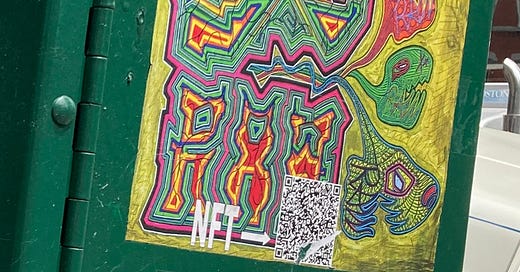The story as I’ve heard it is, when Picasso was starting out in Paris there was one Marthe Weill who didn’t mind pinning a couple of his drawings to a clothesline, make a few francs. Then Marthe moved to a real shop on the rue Royale, around the corner from Degas, but Degas was an anti-Semite and he made a point of turning away from Mme Weill’s shop as he passed. Jews had no business promoting Art.
Ms. Felicia doesn’t mind pinning a Jacob Lawrence print to the chain-link fence at the Columbus Avenue flea on 77th Street. A nice one, a signed print meant to illustrate a poem of Langston Hugues. Next to it is another signed piece by Chaim Gross, the Ukrainian Jew.
Doesn’t make sense, does it? We all know there’s a “bull market for art.” Meaning: there’s a bull market for certain types of art. It’s been a while since the big auction houses ditched their medium-range business for the big-ticket items, which are so much more profitable: quick markup, fast turnover, no need for painstaking authentication, low-cost-per sale ratio.
To the auction-house and the museum and the gallery there are certain people who have no business promoting art: the kind of people who promote the art that those institutions have no interest in promoting because it’s not the art in which these institutions have an interest. Many years ago I called up a former teacher, now a curator at a major museum. I’d just located a painting that felt like a George Inness, and would the museum be interested? “Paul, do you expect me to go to the trustees and tell them they should buy a painting on your say-so?” Took me a while to find an answer: “And which say-so would the trustees trust?” The art world’s full of insecure people, and in that world the dénicheur — the word for people like Mme Marthe — moves like a shark among the minnows. Have faith.
Forthcoming:
Cynical Lackeys R’ Us
Jacques Villeglé, 1926-2022
Winslow Homer at the Metropolitan Museum of Art





How could I be so wrong? Weill's gallery was at 25 rue Victor Massé, just down from Place Pigalle. Degas lived at # 13. The rest stands.